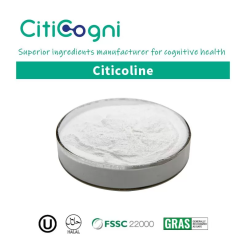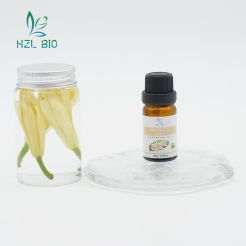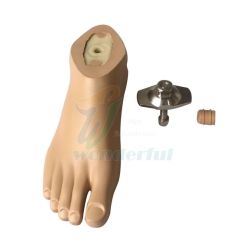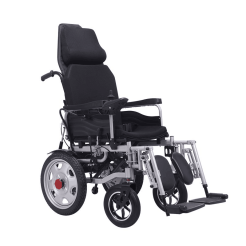Glycyrrhizin - Glycyrrhiza Glabra Root Extract Powder
<p>CAS: 1405-86-3</p> <p>EINECS number: 215-785-7</p> <p>Molecular formula: C42H62O16</p> <p>Molecular weight: 822.92</p> <p>Boiling point: 1050.9 ° C at 760 mmHg</p> <p>Flash point: 589.4 ° C</p> <p>Steam pressure: 0mmHg at 25 ° C</p> <p>Usage: As a drug, it has anti-inflammatory and anti allergic effects; As a sweetener, it is widely used in various foods.</p>
Product Description
Glycyrrhizin - Glycyrrhiza Glabra Root Extract Powder

Licorice, as a commonly used traditional Chinese medicine, has been accepted and used by people. Its main components include glycyrrhetinic acid, glycyrrhizic glycoside, glycyrrhizic flavonoids, oxytetracycline, quercetin, etc. It has detoxification, anti-inflammatory, cough relieving, anti-tumor, anti ulcer, antibacterial and other effects. At the same time, glycyrrhizin can inhibit the proliferation of AIDS virus; Glycyrrhetinic acid has inhibitory effects on both myeloma and ascitic liver cancer. Glycyrrhetinic acid has a significant antidiuretic effect; Glycyrrhizin and isoliquiritigenin have anti ulcer and antispasmodic effects; Glycyrrhizic flavonoids still have antioxidant and antibacterial effects.
There are three types of licorice medicinal plants recognized by the National Pharmacopoeia, namely dry roots and rhizomes of Glycyrrhiza uralensis Fisch., Glycyrrhiza inflata Bat., and Glycyrrhiza glabra L. Among them, licorice has the widest distribution, the highest yield, and the best quality.

The Eastern Han Dynasty's "Shennong Bencao" referred to licorice as "beautiful grass" and "dense licorice", and listed it as a top grade. Traditional Chinese medicine believes that licorice has a sweet and smooth taste, and is a good medicine for tonifying the spleen and tonifying qi, relieving cough and disease, relieving pain slowly, harmonizing various medicines, and detoxifying. The US FDA lists licorice extract as a safe and non-toxic substance. Scientific research has shown that licorice mainly contains glycyrrhetinic acid and flavonoid glycyrrhizin (glycyrrhizin). Licorice extract is an additive with multiple functions such as antibacterial, anti-inflammatory, detoxifying, and deodorizing.
Glycyrrhizin is an effective component of liquorice sweetness, which is a very promising pure natural sweetener. It has high sweetness (about 80-300 times as sweet as sucrose), low heat energy, safety, non-toxic and strong health care effects. It is the most ideal sweetener for patients with hypertension, obesity, diabetes, and heart disease. It can make up for the drawbacks of saccharin and other sweeteners that cause the above diseases.
Specifications:
|
Product Name |
Glycyrrhizin Powder |
|
Alias |
Glycyrrhizinic Acid, Liquorice Root Extract Powder |
|
CAS |
1405-86-3 |
|
EINECS |
258-887-7 |
|
Appearance |
Brown yellow powder/White crystalline powder, Slightly sweet odor |
|
Molecular Formula |
C42H62O16 |
|
Molecular Weight |
822.93 |
|
Boiling Point |
972 ℃ |
|
Melting Point |
212~217 ℃ |
|
Density |
1.4 g/cm ³ |
|
Flash Point |
288 ℃ |
|
Solubility |
insoluble in cold water, easily soluble in hot water, insoluble in oil, and its hot water solution becomes viscous and gelatinous after cooling. Soluble in propylene glycol. |
|
Source |
Dry roots of licorice in the leguminous plant genus Glycyrrhiza |
|
Detection Method |
UV spectrophotometry, high-performance liquid chromatography |
|
Storage |
Store in a cool and dry place. |
|
Usage |
As a drug, it has anti-inflammatory and anti allergic effects; As a sweetener, it is widely used in various foods. |
Synthetic Method:
1. This product has a special sweetness, with a sweetness of about 250 times that of sugar. The sodium glycyrrhetinic acid extracted from licorice has a sweet taste even when diluted 4000 times in aqueous solution. But directly as a sweetener for certain foods, it is not suitable. Generally, it can be used in combination with natural sugars such as sugar, glucose, and syrup, or in appropriate combinations with saccharin, glycine, propylene glycol, etc., to obtain a more delicious sweetness. In 1978, Japan produced 240 tons of glycyrrhetinic acid, with the highest year being 12000 tons of imported glycyrrhetinic acid. In 1978, 26% of the total sales were for pharmaceuticals and cosmetics, 70% were for food, and 4% were for cigarettes and other purposes. In terms of food, the main uses of soy sauce are: (1) in addition to improving the salty taste to enhance the inherent flavor of soy sauce, it can eliminate the bitterness of saccharin and have an enhancing effect on chemical seasoning agents. (2) In the brine method of pickling pickled vegetables with saccharin, the bitterness of saccharin can be eliminated. During the pickling process, it can overcome the drawbacks of fermentation spoilage, discoloration, and hardening caused by adding less sugar. (3) Seasoning: This product can be added with pickling seasoning solution, seasoning powder, or temporary seasoning during diet to increase sweetness, obtain a salty taste that is hostile to Ba, and reduce the peculiar smell of other chemical seasoning agents. (4) The use of this product can increase the sweetness and uniformity of the taste of small soy sauce pickled herring. In the process of extracting licorice, ammonium glycyrrhetinic acid is dissolved in an aqueous solution containing sodium carbonate, and then concentrated under reduced pressure to obtain disodium glycyrrhetinic acid (C42H60Na3O16) and trisodium glycyrrhetinic acid (C42H59Na3O16). Also used as a food additive, as a sweetener for soy sauce and soy sauce. The LD50 for intraperitoneal injection of disodium salt in mice is 1.44 g/kg, and for subcutaneous injection of trisodium salt in mice is 1.54 g/kg.
2. Crush the dried licorice roots, boil them in water for extraction three times, combine and filter the extraction solution, concentrate it to 1/5 of the original volume, stir and add concentrated sulfuric acid until no precipitation occurs, and let it stand overnight. Collect brown precipitate, wash with water, and dry the powder below 60 ℃. The powder was refluxed with acetone three times to remove impurities insoluble in acetone. The acetone solution was cooled and added with 20% potassium hydroxide solution until weakly alkaline, resulting in the precipitation of crystals as tripotassium glycyrrhetinic acid. The aqueous solution was added with acid to generate free glycyrrhetinic acid.
3. Supercritical CO2 extraction method: In the supercritical extraction state, CO2 is used as the extractant and water ethanol is used as the carrier to extract glycyrrhizin from licorice. The optimal extraction temperature is 40 ℃, the pressure is 35 MPa, the mass ratio of the extraction system to the material is 4-5, and the extraction time is 5 hours. CO2 extracted does not react chemically with the active ingredients of the extract, is non-toxic, pollution-free, carcinogenic, and has a low boiling point, making it easy to remove from the product.
4. Extract from licorice roots and dissolve in hot water.
Main Application:
(1) It is a high sweetness and low calorific value health sweetener, with a sweetness of about 250 times that of sucrose; It can be added as a sweetener in the food, beverage, and candy industries, and can also serve as a natural pigment in yellow or brown food and beverages.
(2) Pharmaceutical industry: used for relieving cough and expectoration, gastric ulcer, acute and chronic gastritis, eczema, skin itching, hepatitis, hyperlipidemia, papillomavirus, conjunctivitis, and for treating cancer and preventing AIDS.
(3) Cosmetics and cigarette industry; It can prevent dermatitis, dry skin, sun exposure, rash, and throat wetting.
(4) Licorice extract can activate corticosteroids (inhibit metabolic enzymes), indirectly enhance the role of corticosteroids, and can be used in all cosmetics such as cream, cream, water, dew, lotion, milk and honey. It can neutralize or remove or reduce the toxic substance of cosmetics, and also prevent allergic reactions of some cosmetics, which is more suitable for advanced hair or skin cosmetics.
(5) Licorice flavonoids have a mild inhibitory effect on tyrosinase, and licorice extract has been proven to be the most effective plant whitening agent.
OEM&ODM Compound Sweetener:
We are a professional manufacturer of natural sweeteners. In addition to supplying regular Glycyrrhizic Acid specifications, we can also provide you with the best sweetener solution according to your needs. At the same time, we can also provide composite and alternative sugar solutions based on your formula.
Certificates:
Package:
 |
 |
 |
|
5 Grams to 2kg Packaging: Alu-bag |
5 KG/Al-Tin Packaging: 2 pcs Alu-tin with box |
25 KG, Packaging: Drum (54*37*37cm)=0.07CBM N.W:25KG / G.W:28KG |
Delivery:

Why Choose Us
Contact Us
Whether you'd like to get more info on what, why and how we do what we do, need help with what you're
creating, would like to partner up or just say hi! ---we'd love to hear from you!
Email: sales@greenspringbio.com
Tel.: +86 132 2777 5215
Fax: +86-29-88328052
Whatsapp: +8613227775215
Add.: China Office Add: Floor 14 Suite B, HuiXin IBC, No.1 Zhang Ba 1 Road, Hi-tech Development Zone, Xi'an. China.
Add.: France Office Add: 149 Avenue DU MAINE 75014 PARIS 14 Phone: +33 659468007









